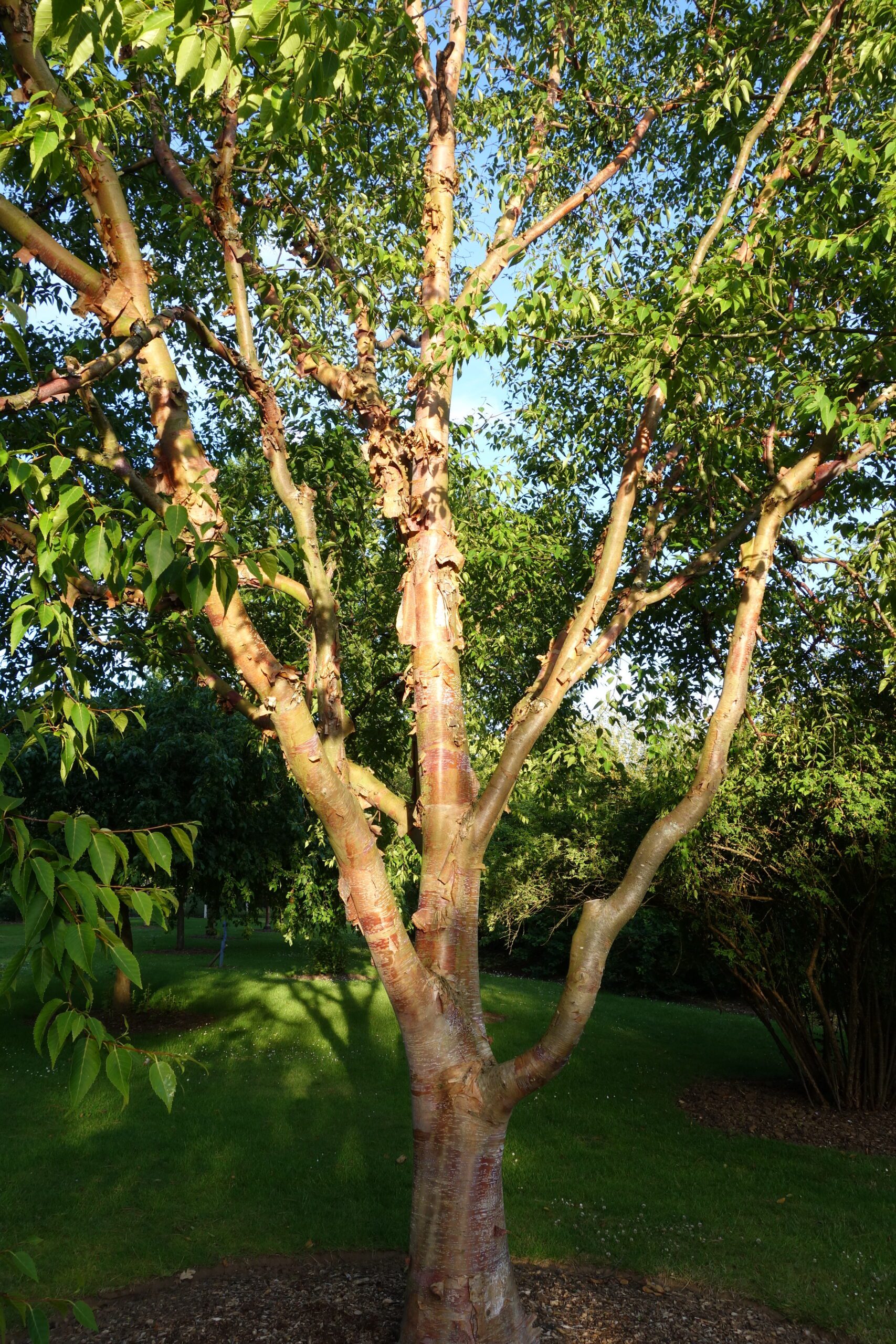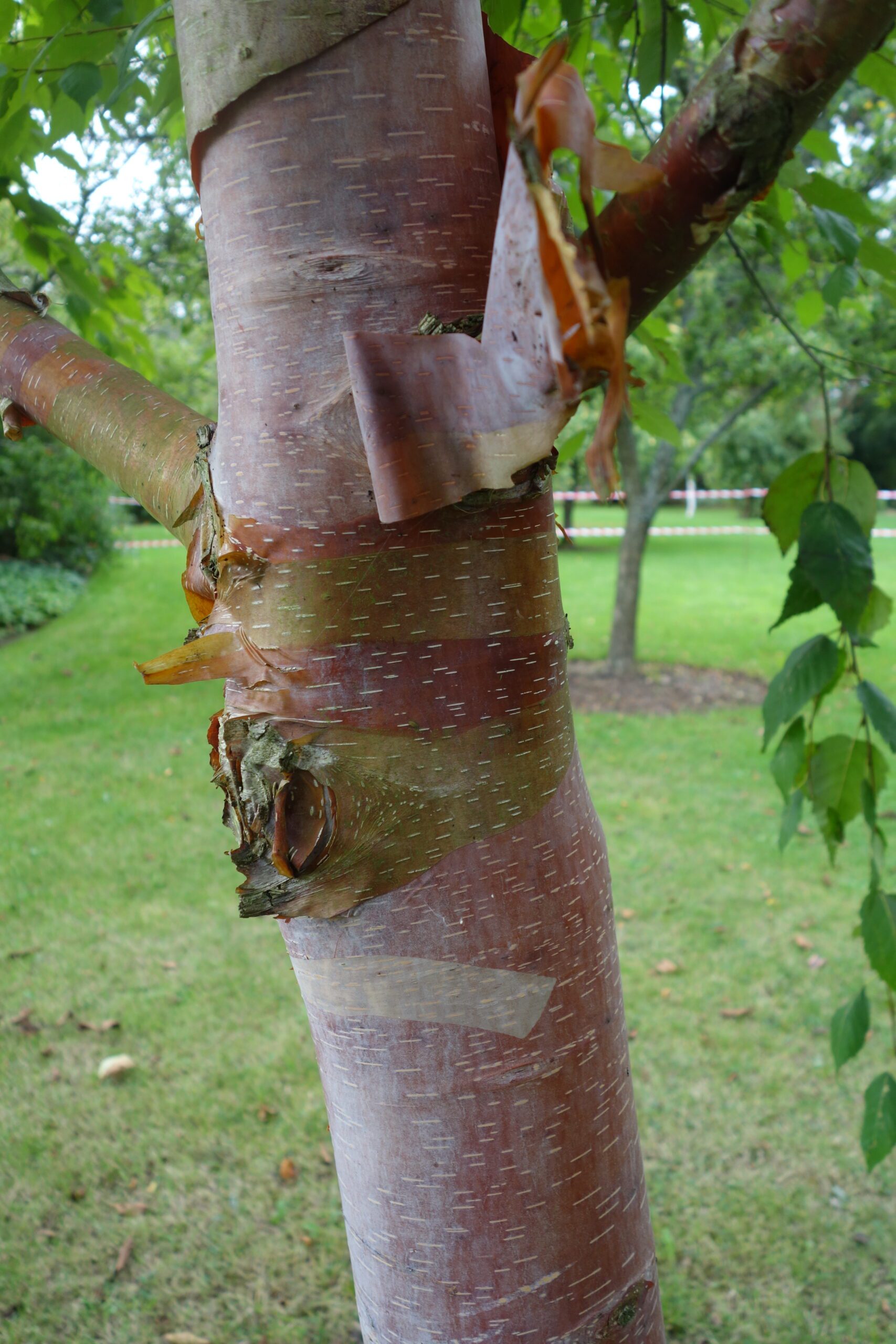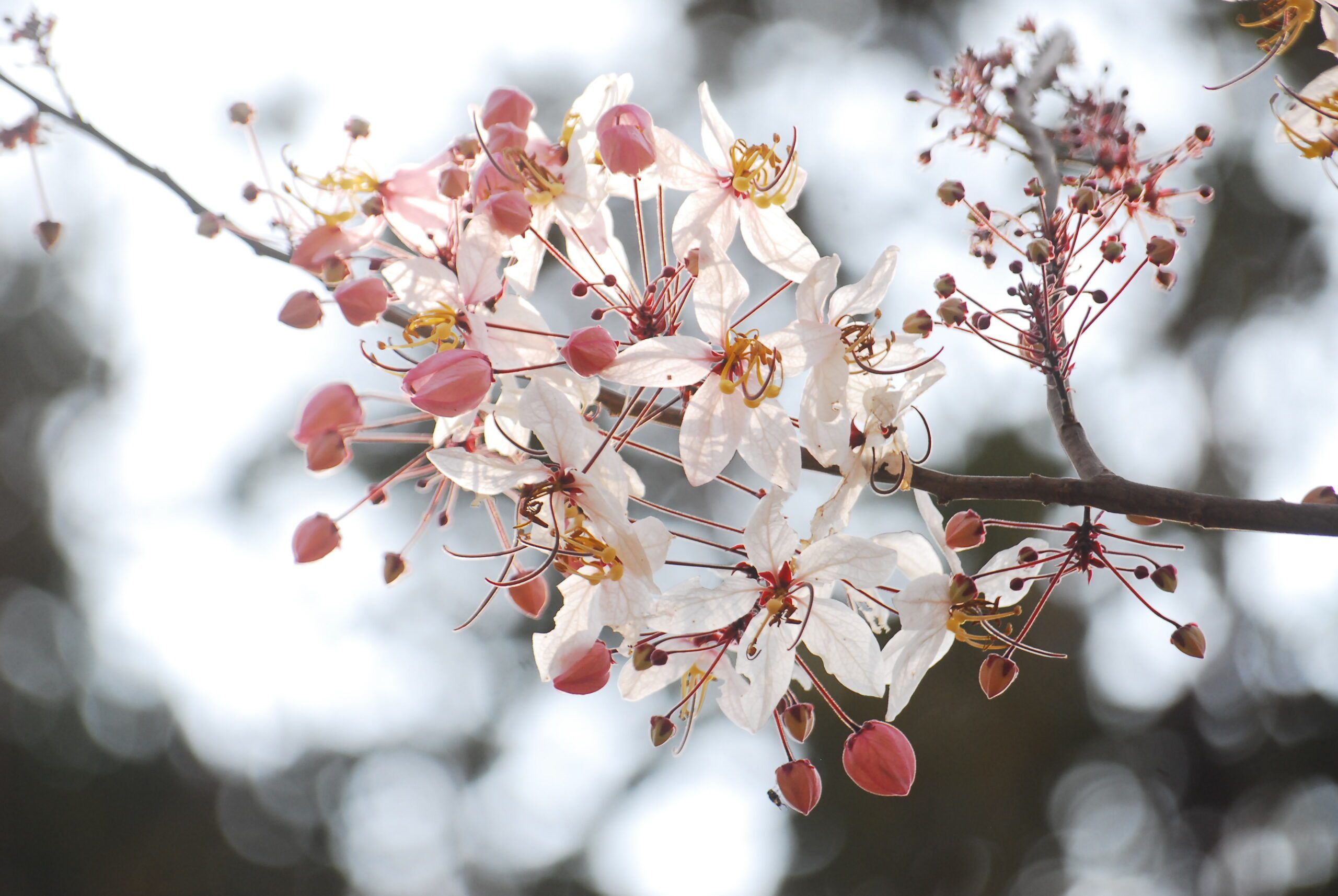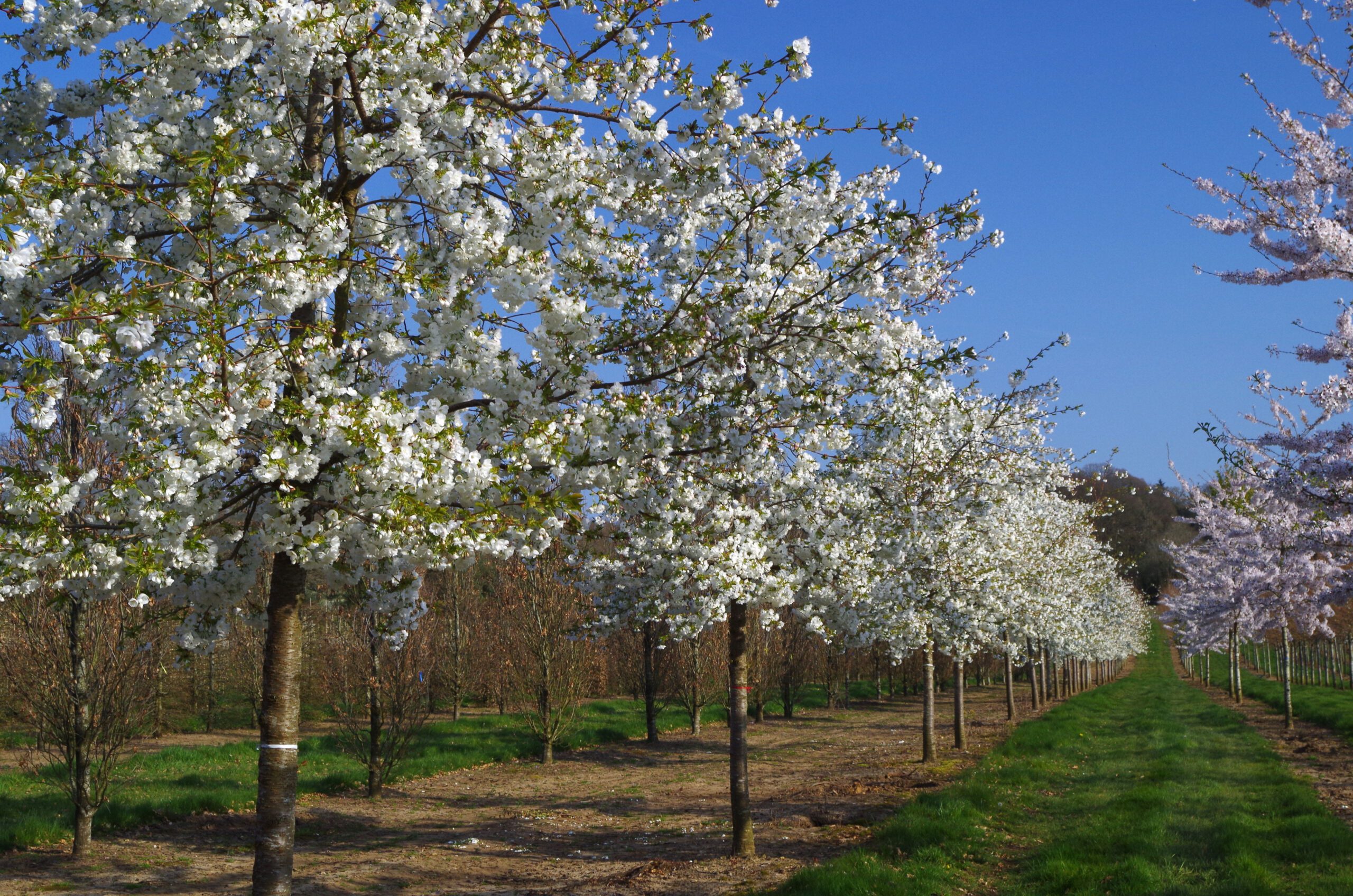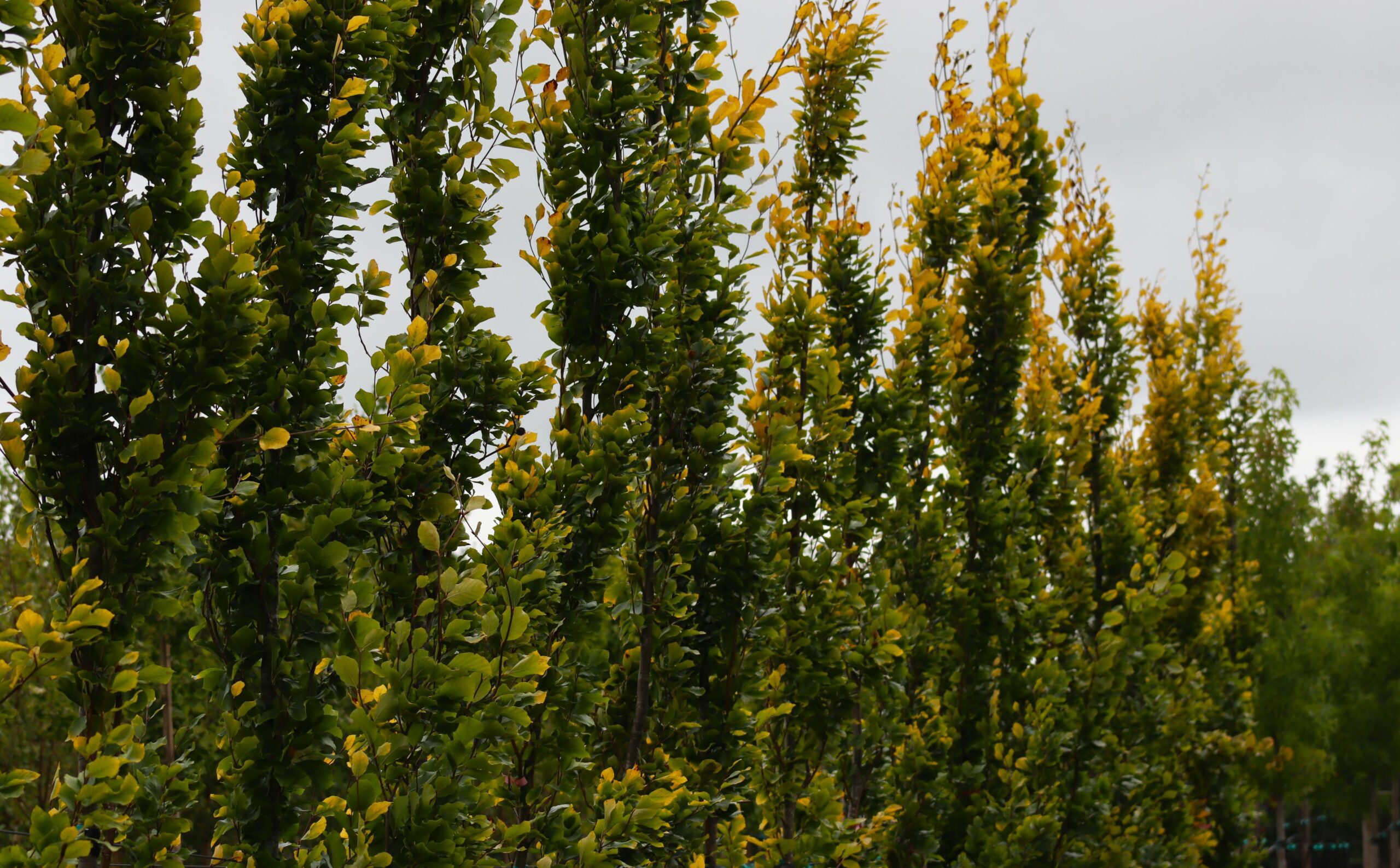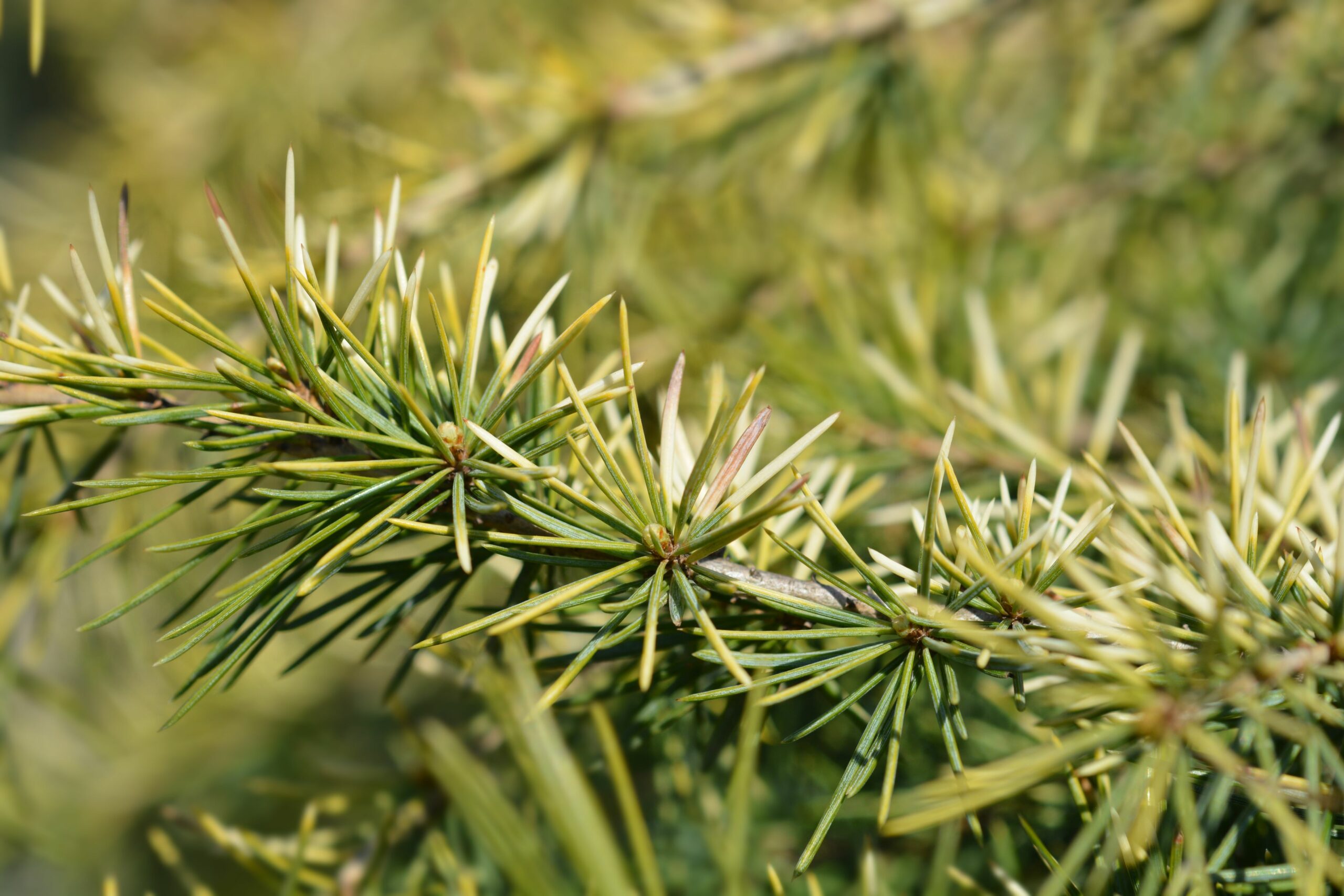Tree Information
Specialities
Tolerances
Wet Soil: Low
Dry Soil: High
Lime: Medium
Native to Western China, the Betula albosinensis was first introduced to England in 1901 by plant hunter Ernest Wilson. He praised the glistening beauty of its bark and when seen in contrast to the fading colours in winter, it’s easy to understand why. A sophisticated alternative to the striking white of the Himalayan birch.
The albosinensis’ smooth, thin bark is the highlight of the tree. From a young age, the bark will start to flake, revealing a copper red colour. As the tree matures, the colours intensify and become stunning shades of reddish-brown, pink and copper. The peeling tree creates an attractive visual texture, adding interest to any landscape, especially within a brisk winter palette.
At the beginning of spring before the leaves emerge, Betula albosinensis will produce honey-coloured male catkins and upright, greenish female catkins. These not only add an interesting touch to the tree’s appearance, but are an invaluable food source for wildlife. Catkins will eventually turn into small, winged nutlets and will be dispersed by the wind.
The Red Barked birch’s captivating bark, graceful form and lovely autumn foliage make it a popular choice for ornamental planting. It adds visual interest and a touch of elegance to any landscape. At Hillier Trees, we have found the premium varieties to grow are the Betula albosinensis, the China Ruby and the Fascination, all of which are grown as standard and multi-stem trees.
Visit our Useful Resources for in-depth guides
Discover guides to help you with specifying your trees, caring for your trees and understanding the weights and dimensions of trees.
Useful ResourcesSize
Medium
8m high x 4m wide after 25 years
Environment
Roots are shallow so try to avoid planting in paved areas. A popular choice for parks, large gardens and residential landscapes.
Canopy
Relatively narrow, pyramidal to oval-shaped crown. Branches are thin and drooping.
Foliage
Leaves are ovoid, double serrated and emerge as a yellow green colour. They become dark green in summer and turn shades of golden yellow in autumn.
Bark
From a young age, bark will start to flake, revealing a copper red colour. This turns to stunning shades of reddish-brown, pink and copper as the tree matures.
Resilience
Thrives in well-drained soils preferring slightly acidic to neutral pH levels. Relatively adaptable to different growing conditions. Likes both full sun and partial shade. Tolerant to urban pollution and is frost and moderately wind resistant.
Available As:
Semi-Mature, Multi-stem
Make an Enquiry
Enquire below and speak to one of our expert team. For trades only, for general public enquiries click here.
Find Trees For Your Project
View Our TreesSpeak to a Member of Our Sales Team
Make an Enquiry
